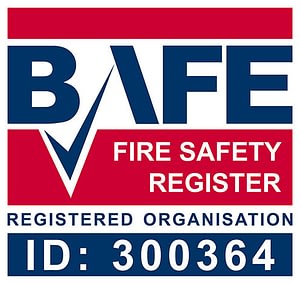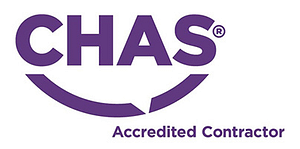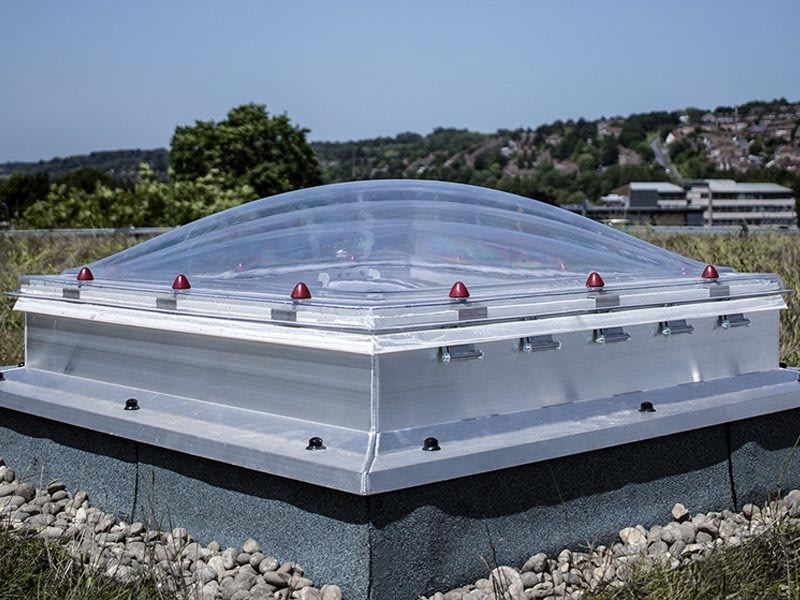Fire safety & security
Safety is non-negotiable, and you need systems that are built to protect and to last. With over 50 years of experience, we understand what you need from your commercial fire safety & security solutions.
Experts in fire safety solutions
Whether you need an all-inclusive fire safety equipment subscription or simply a pay monthly servicing contract to cover your annual checks and engineer visits, we are your partner for fire safety services for detection & warning systems, active & passive fire fighting equipment and compliance maintenance/testing throughout your building.
Our fire safety services keep your people and buildings safe, from initial risk assessments and site surveys to equipment installation and maintenance for your most critical devices.
How it works
We create the right solution for your business
We look at your specific needs and develop the right commercial fire safety and security solutions for your business.
JLA Total Care gives you all the fire safety and security equipment you need in one all-inclusive plan, including design, installation, maintenance and repairs for a simple monthly subscription payment.
Whatever the job calls for we’ll take care of it.
Assess
Install
Maintain
Our range of fire safety solutions
With tailored options, whether you need an all-inclusive fire safety equipment subscription or simply a pay monthly servicing contract to cover your annual checks and engineer visits, we provide best-in-class UK-wide fire safety services for detection & warning systems, active & passive fire fighting equipment and compliance maintenance/testing throughout your building.
We offer a range of fire safety services to keep your people and premises safe, from initial risk assessments and site surveys to equipment installation and maintenance for your most critical devices.
Fire doors
Fire extinguishers
Whatever fire extinguisher you need, we’ve got it. Our experts will help you pick the best products for your business in case of emergency.
Fire safety training
Online and offline training courses are a key part of a fire protection plan. Speak to our experts about which courses would best suit your needs.
Fire alarms
AOV Systems
Emergency lighting
This is key to safe evacuation in an emergency. We’ll install and maintain the most suitable lighting along your key escape routes to lead your people to safety.
Why JLA
We’ve been supporting businesses by keeping their critical equipment running for 50 years
Whatever your fire safety and security challenges, contact our team today for a free consultation. We’ll get to know your exact requirements, book in a site survey to get closer to your existing equipment and recommend the best way to kit out your business for optimum fire detection, fire prevention and evacuation planning across your single or multiple site premises.
Whatever the job calls for we’ll take care of it.
Certified
Quality
Peace of mind
Not sure where to start with fire safety?
Our accreditations








Get started with a professional fire risk assessment
If you’re a business owner, manager or landlord, you have to meet a legal requirement to make sure a full fire safety plan is in place
By law, every UK business with five or more employees must keep a written record of their fire safety plan, which is managed by their ‘Responsible Person’. This is someone who is in charge of making sure premises comply with The Regulatory Reform (Fire Safety) Order 2005.
A commercial fire risk assessment helps you meet fire safety standards by highlighting any risks and outlining the things you need to put in place or improve. Our team of BAFE-accredited, fully qualified BS5839 and BS5266 trained experts can carry out this assessment, before offering a full fire prevention audit and consultation. Once you have a plan of action, we can install and maintain the fire extinguishers fire doors and signage you need. We created this approach to help you put a comprehensive and documented fire system plan into action, quickly and simply.
We’ll take care of it.
Organisations we work with
Over the past 50 years we’ve worked with more than 22,000 organisations






Insights and advice
Read our latest insights and advice on the things that matter most to your business, from compliance to hygiene
‘What’s an AOV?’ and other common questions
PFAS and Fire Extinguishers: The key facts and what you need to know
Fire safety essentials for care homes
Get my quote
By clicking Get my quote, you agree to the Terms and Conditions set out by this site, including our Privacy Policy


